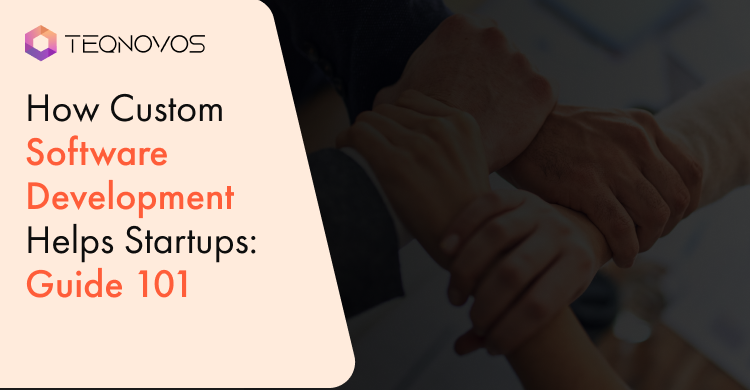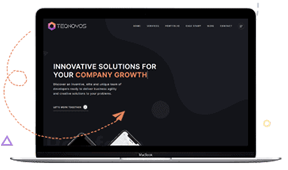SaaS Healthcare: Here’s Everything You Need to Know
In the past decade, we have witnessed a drastic increase in the number of internet users. The widespread use of the internet has resulted in the emergence of several new technologies, including cloud computing.
Cloud computing refers to the delivery of IT infrastructure and services over the internet, such as servers, data storage, software, etc. There are different service models of cloud computing, and SaaS or software-as-as-service is one among them.
SaaS allows the delivery of software over the internet. The software is hosted on a central server and users directly access the software through a web browser. Being hosted on a central server means that the code of the software is deployed on the server and users do not need to install the software locally on their systems.
SaaS applications benefit both users and vendors in many ways. As a result, SaaS apps are in high demand in almost every industry. One particular industry that reaps significant benefits from employing SaaS is the healthcare industry.
As healthcare providers are always looking to deliver better patient care, SaaS apps can be a great choice for them. Moreover, the SaaS model helps reduce operational costs for healthcare providers, thus bringing down healthcare services’ prices.
This blog sheds light on all the critical aspects of SaaS in healthcare. Here, we will discuss the benefits of SaaS in the healthcare industry and the latest healthcare SaaS trends.
So, let’s get started!
SaaS Healthcare: A Brief Overview
SaaS healthcare or healthcare SaaS refers to the delivery of healthcare software over the internet. There are different types of SaaS applications available for the healthcare industry. While some applications are only for the internal use of healthcare organizations, others help to store and share patient data and deliver better healthcare services.
Earlier, healthcare organizations used paper for keeping a record of patient data. However, this method is slow, prone to human errors, and ineffective. Retrieving and sharing patient data becomes quite difficult with paperwork.
Soon after the popularity of computer systems and software soared, many healthcare organizations set up in-house IT infrastructure. Such infrastructure allowed healthcare organizations to digitize patient data (as electronic health records) and use software to streamline various operations. However, setting up in-house IT infrastructure is costly and interoperability becomes a major issue when different organizations need to share medical records.
The advent of cloud computing and SaaS made it possible for healthcare organizations to make the most of EMR (electronic medical record), EHR (electronic health record), and telehealth. Healthcare providers can use SaaS healthcare software without having to worry about setting up and managing an IT infrastructure. They can simply start using a SaaS application by paying the vendor a certain fee.
Healthcare SaaS is in huge demand today, and there are thousands of healthcare applications available in the market. Healthcare providers have the flexibility to choose the most suitable applications according to their requirements.
As per a report by Zion Market Research, the value of the healthcare computing market is expected to grow from $18.85 billion in 2018 to $61.84 billion in 2025. Also, the CAGR (compound annual growth rate) for the healthcare computing market between 2019 and 2025 would be around 18.7%.
The market growth clearly indicates the increasing demand for healthcare SaaS applications. Consequently, there is an excellent opportunity for every SaaS healthcare company to create innovative SaaS apps to meet the growing needs of healthcare providers.
Need Help to Develop a Feature-rich SaaS Healthcare App? Connect With Our Team Now.
Schedule a CallAdvantages of Using SaaS for Healthcare
Here are the key advantages that SaaS brings to the healthcare industry.
-
Helps Save Money
The development and maintenance costs of healthcare software are huge. Building proprietary software costs a large upfront investment that only a few healthcare organizations can afford. Even when using on-premise healthcare software offered by a vendor, healthcare organizations still need to bear the maintenance cost.
With SaaS, there’s no need to pay separately for the maintenance and upgradation of software because the vendor handles these tasks. As the software is hosted on a server, the vendor can carry out maintenance and updation directly on the server. Users will get the updated version of the software without the need to do anything.
-
Better Data Security
Healthcare applications deal with sensitive patient data. As the data is shared over the internet, it becomes susceptible to cyberattacks. The SaaS applications for healthcare make use of various security measures to ensure the confidentiality and integrity of data. Additionally, these apps adhere to various standards and compliances, such as HIPAA, to prevent misuse of patient data.
-
Highly Scalable
Being cloud-based, SaaS applications can scale up or down effortlessly. A healthcare organization has the flexibility to scale a SaaS app depending on its business’s needs. For instance, an organization can get access to more features and/or resources by opting for an advanced plan offered by a SaaS application.
-
Accessibility
Ease of access is probably one of the most important benefits of using SaaS-based healthcare applications. As SaaS apps are accessible over the internet, medical professionals and patients can access them from anywhere using any internet-enabled device that supports web browsers.
-
Effective Collaboration
Collaboration among healthcare professionals is key to delivering better patient care. With SaaS applications, doctors, nurses, and medical staff effectively coordinate with each other. They can share patient data, lab results, and second opinions in real time. Quick collaboration proves extremely helpful when delivering critical patient care.
-
Promotes Telemedicine
Telemedicine is the future of healthcare as it eliminates the hassle involved in receiving proper and timely treatment. Patients can receive the best treatment without leaving their homes. Telemedicine allows doctors and patients to connect with each other. SaaS apps facilitate telemedicine and let patients consult one of the best doctors over an audio-video call.
Latest Healthcare SaaS Trends
As evident, the scope of SaaS applications in the healthcare industry is quite broad. Many healthcare organizations are leveraging SaaS to restructure themselves and become more efficient. With the rising dominance of SaaS in healthcare, here are some of the latest healthcare SaaS trends to look out for.
-
Vertical SaaS
While horizontal SaaS focuses on catering to the needs of multiple industries, vertical SaaS refers to SaaS solutions that aim to serve a particular industry. In the healthcare industry, dedicated healthcare SaaS applications can help to tackle issues that are specific to healthcare organizations. The popularity of vertical SaaS in healthcare is rising, and it can benefit organizations in many ways.
-
Migration from SaaS to PaaS
The shift from SaaS to PaaS is another healthcare SaaS trend. PaaS or platform as a service is a cloud computing model to provide the platform or environment needed to deploy cloud applications. With PaaS, healthcare organizations can develop custom applications and deploy them with ease without the need to manage the IT infrastructure.
-
Use of Artificial Intelligence and Machine Learning
Artificial intelligence (AI) and machine learning (ML) allows the creation of smart applications that can automate various tasks. AI and ML are two revolutionary technologies that help to accomplish tasks with little or no human intervention. Machine learning is a subset of artificial intelligence, and it focuses on training machines by analyzing data and finding patterns. For instance, AI and ML allow the development of virtual assistants to assess symptoms, schedule appointments, and much more.
-
Pay-per-use Pricing
The pay-per-use pricing model is emerging as a better alternative to the subscription-based pricing model for SaaS applications. Unlike the subscription model, users only need to pay for the services or features that they use. Users do not need to pay a fixed amount every month to access the application. Many SaaS-based healthcare applications have already adopted the pay-per-use pricing model.
Our SaaS Experts Create Futuristic SaaS Healthcare Software. Let's Discuss Your SaaS Idea Today.
Schedule a CallHow Does a SaaS Healthcare Company Develop a SaaS-based Healthcare Application?
Due to the growing demand for SaaS in healthcare, both startups and established software vendors are working hard to develop innovative healthcare solutions. As a result, there has been an upsurge in the number of healthcare SaaS companies.
If you are also interested in building a SaaS-based healthcare application, you must know the basic steps to accomplish the same.
Step 1: Market Research & Idea Gathering
The foremost thing you need to do is to analyze the healthcare SaaS market. The motive for conducting market research is to gather ideas for an application and identify the target market.
Step 2: Software Requirements Identification
After having a set of ideas, you have to scrutinize each idea and finalize one idea for your SaaS application. You will need to outline all the software requirements, including stakeholders’ expectations and the software features. It is essential to document everything so that there are no issues or complications in the later stages.
Step 3: Choose an MVP
Instead of developing an application with lots of features, it’s a good idea to build an MVP first. An MVP or minimum viable product is a software product with only the most basic and essential features. Developing an MVP helps to reduce development costs and time. It also helps you assess the reception of your product idea among the target audience. In case target customers do not like the MVP, you can modify the idea or work on some other idea.
Step 4: Design & Development
In this stage, the first task is to design the software and create wireframes and high-fidelity prototypes. Once the design is ready, developers need to get into action and develop the product with all the specified features.
Step 5: Testing and Deployment
After developing the MVP, it becomes crucial to test the software product and ensure its proper functioning. Any issues or bugs detected in this step need to be rectified by the development team. After the application passes all the testing phases, developers must deploy it on the cloud to become available to end users.
Step 6: Maintenance and Updates
To ensure hassle-free operation of the SaaS application and ensure zero downtime, it becomes essential to carry out regular maintenance. Also, it becomes essential to add new features every so often to meet the changing demands of the end users.
What is a SaaS Healthcare Company?
A SaaS healthcare company develops and distributes SaaS-based healthcare applications. They deploy applications on the cloud that healthcare organizations can access over the internet through a subscription model. Many SaaS healthcare companies have in-house development teams responsible for the production and maintenance of SaaS applications. On the other hand, there are others that partner with a top-rated SaaS healthcare software development company to outsource all the resources needed to create feature-rich SaaS healthcare apps.
If you are planning to start a SaaS healthcare company but are not ready to make a heavy investment in setting up an in-house development team, it’s always best to consult a leading SaaS application development company, like Teqnovos. They will assist you in developing a robust and scalable SaaS healthcare application. As a top healthcare app development service provider, you can Review Teqnovos on DesignRush to see what clients have to say about the company’s services.
Hire Professional SaaS Healthcare Software Developers. Let's Connect.
Schedule a CallConclusion
SaaS healthcare is in the limelight today, all thanks to its ability to strengthen the healthcare industry. With SaaS-based applications, the delivery of health services becomes easier and more effective.
It is possible for a SaaS healthcare company to create web-based EHR and EMR systems that are interoperable and share patient data seamlessly in real-time. SaaS apps are easily accessible and healthcare organizations do not have to set up and manage IT infrastructure to use them.
One particular aspect of SaaS healthcare that businesses have an eye on is its huge growth potential. As a result, many companies are developing SaaS-based healthcare solutions to meet the growing demand of the market. Seeking assistance from a leading SaaS development company is the best option for aspiring healthcare companies to build robust apps.
















